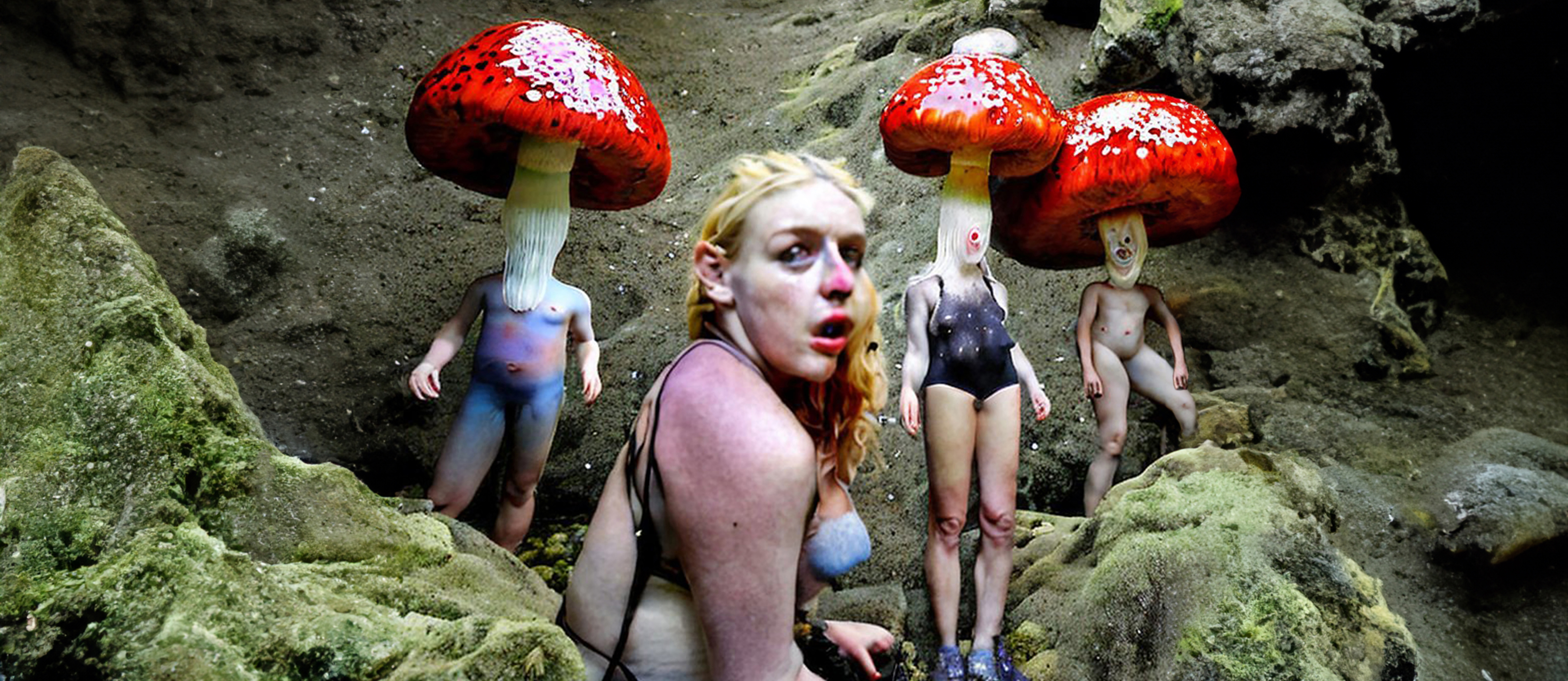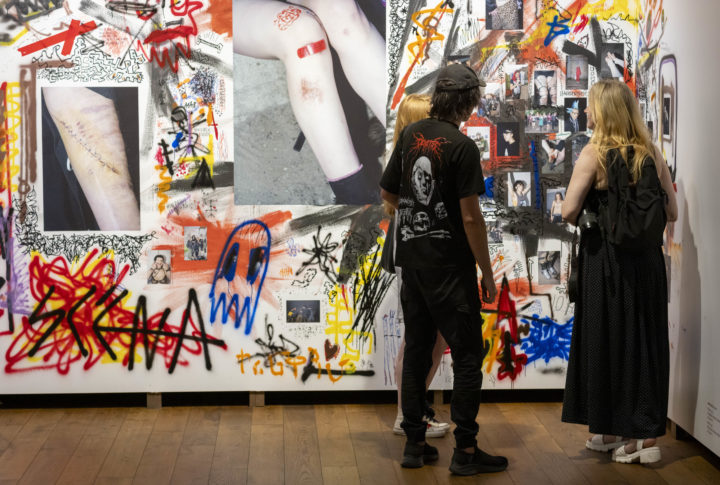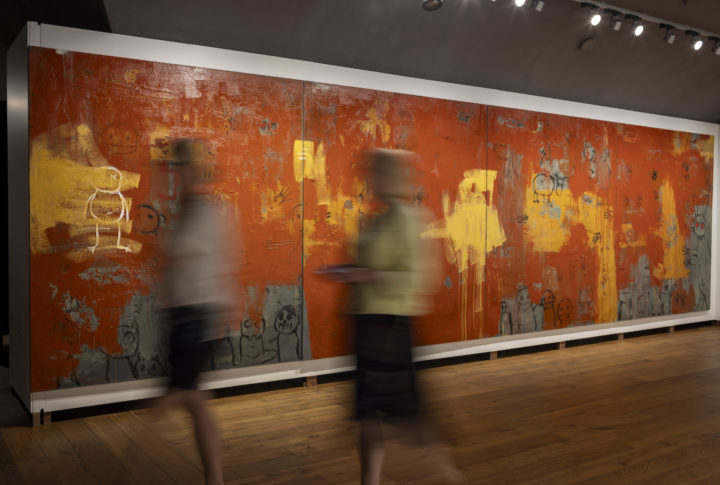Dear figure, whom did you hang out with last night?

Group of Latvian artists
(Picture : Gints Gabrāns “Mountain of Fungas”)
This exhibition points our gaze at the figure. The figure first, and only then the body, this socially charged unit or even the symbol that the figure represents. The figure – that is to say, the human figure itself rather than figurativism – inhabits contemporary art in highly uncommon ways. As the people endlessly analyse stories, concepts and styles, figures grow increasingly distant from one another until they end up in opposing camps. On the other hand, an emphasis on the figurality of the figure contributes to a vast and strong community of figures. The figure was the starting point for representational practice when art was claiming its nascent territory on cave walls. Besides, the figure has been a vessel for symbolic meanings since antiquity. Today, the figure remains at the heart of every classical art course teaching the basics of drawing, forever standing, sitting or reclining in art students’ work.
A deluge of technologies and concepts is flooding the landscape of art and pushing the figure from centre stage to the margins. The figure branches out and migrates. Myriad figures are adrift in contemporary art’s heaving ocean of opportunities and challenges like fragments of a former continent that’s split apart. The figure masquerades, provokes, puts up a fight, and self-destructs. It has withstood deformation and denial by modernism. It has evolved from the whole to the fragment, from antique holism to psychoanalytical schism. Eventually, it has been politicised, becoming a sociological record, material evidence in political battles.
In contemporary art, the figure has been transformed by film. This exhibition, too, has figures that gravitate towards cinematic framing and animation. Emergent or evanescent, they are captured and described (depicted) as they are in a unique moment in time. The artists have extracted certain critical moments from a flowing, continuous motion, and these have become the artwork’s subject and acquired stirring pathos.
The exhibition has figures that come straight from the film medium and address the viewer in its language. Others are rooted in enigmatic colour painting or narrative illustration. There is subtractive sculpture with its bestial anthropomorphism. There is cast bronze, ceramics and fur. The exhibition juxtaposes AI-generated figures with fantastic images born in the human imagination and contrasts hinted traces of figures in gestural abstraction with photographed or painted figures whose origins are manifestly in the subculture.
Despite the influence of abstraction (and the ensuing absence of figures), contemporary art still has plenty of figures, and they clearly resemble humans. But it is human nature to mimic and replicate. In an artwork, the figure is given an appearance and agency by its author, for it is the artist who creates the figure by following a certain something or someone. To quote from Gilles Deleuze and his cogito of art (that is, thinking or awareness), ‘there is no subject which acts without another which watches it act, and which grasps it as acted, itself assuming the freedom of which it deprives the former’. Therefore, the figure is in the author’s and viewer’s purview. And the figure became the subject and dwelt among us. The look and context of the figure are mind-blowing. Dear figure, whom did you hang out with last night?
Featured artists: Diāna Adamaite, Kristaps Ancāns, Arnis Balčus, Aigars Bikše, Kristians Brekte, Sigita Daugule, Roberts Diners un Lilija Dinere, Kristaps Epners, Miķelis Fišers, Gints Gabrāns, Ieva Iltnere, Jānis Mitrēvics, Ernests Kļaviņš, Plastic Afterlife (Kristians Aglonietis, Patrīcija Māra Vilsone) & Agate Tūna, Krišs Salmanis, Sabīne Vernere, Evelīna Vida and Paula Zvane.
Inga Šteimane, exhibition curator
Exhibition period: 31 May 2024 – 25 August 2024










